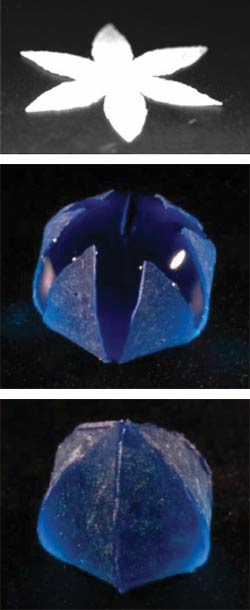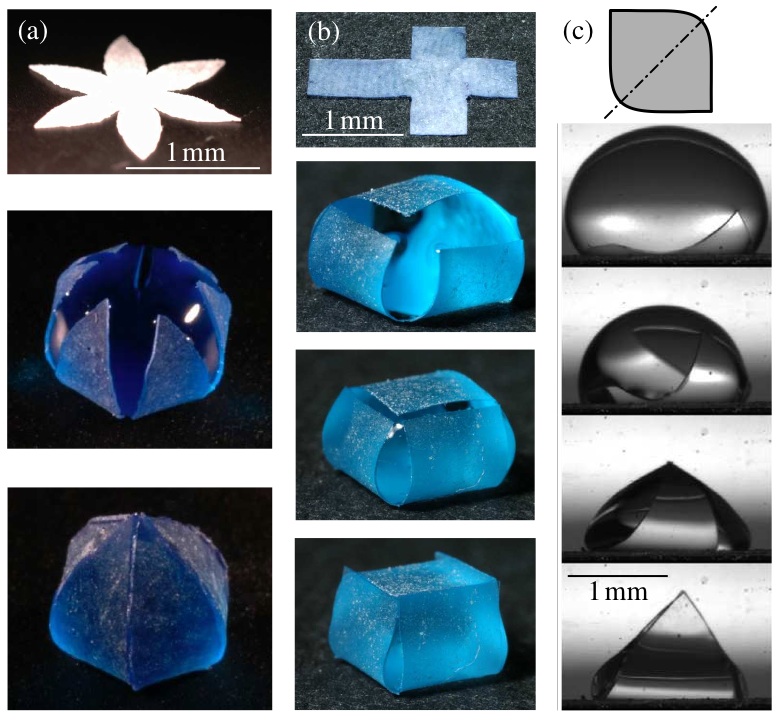Micro-origami
If artistic insects could fold paper into three-dimensional shapes, the results might resemble what appears in the 20 April Physical Review Letters. A team folded millimeter-sized membranes into spheres, boxes, and pyramids, using only the surface tension of water droplets, a force ordinarily unwelcome to researchers working at the microscale. The demonstration could lead to improved techniques for constructing robust microscale or even nanoscale objects by starting with flat pieces that are easy to cut and mass produce.
Micrometer-scale machines have shown up in commercial technologies ranging from computer printers to automobile airbag sensors to telecommunications switches. These MEMS (microelectromechanical systems) devices can include parts such as gears, mirrors, and drive chains. One reason they aren’t more common is that their manufacture relies on two-dimensional etching techniques borrowed from the microelectronics industry. To work with 3-D objects more practically, some researchers have turned to surface tension, using it to assemble, orient, or deflect rigid objects. But José Bico of the Institute of Industrial Physics and Chemistry (ESPCI) in Paris and his colleagues wanted to take surface tension beyond mere manipulation of objects and use it to create entirely new objects of various shapes, sizes, and complexities. Bico says that folding allows you to create complex, robust, three-dimensional shapes from two-dimensional material simply by choosing folds in the right order and orientation.
Bico and his colleagues cut geometric shapes a millimeter or so across from thin, rubbery membranes ranging from 40 to 80 microns thick. They then placed a drop of water large enough to reach all corners on top of each shape. As the liquid evaporated, its surface tension tugged the membrane closer around the water’s decreasing volume, until the remaining liquid was completely encapsulated inside a sphere, tetrahedron, or some other shape. “I would propose our process as a promising way of mass-producing simple shapes,” says Bico, but he can also envision using the technique to produce more complicated shapes as combinations of simpler ones, with automated micro-pipettes depositing drops of water on pre-cut sheets.
With a combination of theory and experiments, the team showed that the final shape depended on two competing forces: the surface tension, which tended to wrap the membrane as tightly as possible around the drop; and the springiness of the membrane, which tended to unwrap it. The researchers manipulated this competition by tailoring the thickness and shape of the membrane to get specific final shapes.
“I love this work–the idea that one can use surface tension to trigger self-assembly at small scales is both extremely simple and extremely clever,” says Anette Hosoi of MIT. And as objects become smaller, she says, the surface effects that the technique exploits become even more important. Thomas Witten of the University of Chicago calls surface tension “a well known bane of electron microscopy” because of the damage it can cause to samples, and yet here it’s used for good. “Any new means of spontaneous formation of structure that works at small scales is bound to be useful,” he says.
–Neal Singer
Neal Singer is a science writer at Sandia National Laboratories in New Mexico and also a freelance writer.





